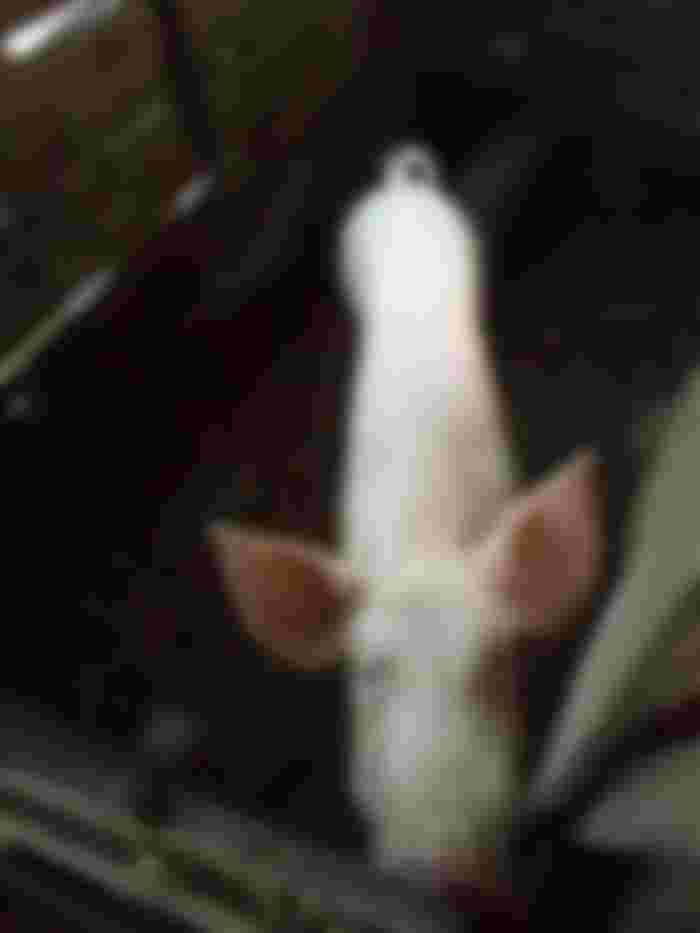The domestic pig is most often considered to be a subspecies of the wild boar, which was given the name Sus scrofa by Carl Linnaeus .

In Agriculture
When in use as livestock, the domestic pig is mostly farmed for its meat, pork. Other food products made from pigs include pork sausage (which includes casings that are made from the intestines), bacon, gammon, ham and pork rinds. The head of a pig can be used to make a preserved jelly called head cheese, which is sometimes known as brawn. Liver, chitterlings, blood (for black pudding), and other offal from pigs are also widely used for food. In some religions, such as Judaism and Islam, pork is a taboo food. Approximately 1.5 billion pigs are slaughtered each year for meat.
The use of pig milk for human consumption does take place, but as there are certain difficulties in obtaining it, there is little commercial production.
Livestock pigs are exhibited at agricultural shows, judged either as stud stock compared to the standard features of each pig breed, or in commercial classes where the animals are judged primarily on their suitability for slaughter to provide premium meat. The skin of pigs is eaten and used to produce seat covers, apparel, and other items.
In some developing and developed nations, the domestic pig is usually raised outdoors in yards or fields. In some areas, pigs are allowed to forage in woods where they may be taken care of by swineherds. In industrialized nations such as the United States, domestic pig farming has switched from the traditional pig farm to large-scale intensive pig farms. This has resulted in lower production costs, but can cause significant cruelty problems. As consumers have become concerned with humane treatment of livestock, demand for pasture-raised pork in these nations has increased.

In Biology
The domestic pig typically has a large head, with a long snout which is strengthened by a special prenasal bone and a disk of cartilage at the tip. The snout is used to dig into the soil to find food, and is a very acute sense organ. The dental formula of adult pigs is 3.1.4.33.1.4.3, giving a total of 44 teeth. The rear teeth are adapted for crushing. In the male the canine teeth can form tusks, which grow continuously and are sharpened by constantly being ground against each other.
Four hoofed toes are on each foot, with the two larger central toes bearing most of the weight, but the outer two also being used in soft ground. Most domestic pigs have rather a bristled sparse hair covering on their skin, although woolly-coated breeds such as the Mangalitsa exist.
Pigs possess both apocrine and eccrine sweat glands, although the latter appear limited to the snout and dorsonasal areas. Pigs, however, like other "hairless" mammals (e.g. elephants, rhinos, and mole-rats), do not use thermal sweat glands in cooling. Pigs are also less able than many other mammals to dissipate heat from wet mucous membranes in the mouth through panting. Their thermoneutral zone is 16 to 22 °C (61 to 72 °F).[8] At higher temperatures, pigs lose heat by wallowing in mud or water via evaporative cooling, although it has been suggested that wallowing may serve other functions, such as protection from sunburn, ecto-parasite control, and scent-marking.
Pigs are one of four known mammalian species which possess mutations in the nicotinic acetylcholine receptor that protect against snake venom. Mongooses, honey badgers, hedgehogs, and pigs all have modifications to the receptor pocket which prevents the snake venom α-neurotoxin from binding. These represent four separate, independent mutations. Domestic pigs have small lungs in relation to their body size, and are thus more susceptible than other domesticated animals to fatal bronchitis and pneumonia.

In human medical applications
Domestic pigs, both as live animals and a source of post-mortem tissues, are one of the most valuable animal models used in biomedical research today, because of their biological, physiological and anatomical similarities to human beings. For instance, human skin is very similar to pig skin, therefore pig skin has been used in many preclinical studies. Porcine are used in finding treatments, cures for diseases, xenotransplantation, and for general education. They are also used in the development of medical instruments and devices, surgical techniques and instrumentation, and FDA-approved research. These animals contribute to the reduction methods for animal research, as they supply more information from fewer animals used, for a lower cost.

Reproduction
Female pigs reach sexual maturity at 3–12 months of age, and come into estrus every 18–24 days if they are not successfully bred. The variation in ovulation rate can be attributed to intrinsic factors such as age and genotype, as well as extrinsic factors like nutrition, environment and the supplementation of exogenous hormones. The gestation period averages 112–120 days.
Estrus lasts two to three days, and the female's displayed receptiveness to mate is known as standing heat. Standing heat is a reflexive response that is stimulated when the female is in contact with the saliva of a sexually mature boar. Androstenol is one of the pheromones produced in the submaxillary salivary glands of boars that will trigger the female's response. The female cervix contains a series of five interdigitating pads, or folds, that will hold the boar's corkscrew-shaped penis during copulation. Females have bicornuate uteruses and two conceptuses must be present in both uterine horns for pregnancy to be established. Maternal recognition of pregnancy in pigs occurs on days 11 to 12 of pregnancy and is marked by progesterone production from a functioning corpus luteum (CL). During mid to late pregnancy, the CL relies primarily on luteinizing hormone (LH) for maintenance until parturition. Animal nutrition is important prior to reproduction and during gestation to ensure optimum reproductive performance is achieved.
Nursing and suckling behaviour

Pigs display complex nursing and suckling behaviour. Nursing occurs every 50–60 minutes, and the sow requires stimulation from piglets before milk let-down. Sensory inputs (vocalisation, odours from mammary and birth fluids and hair patterns of the sow) are particularly important immediately post-birth to facilitate teat location by the piglets. Initially, the piglets compete for position at the udder; then the piglets massage around their respective teats with their snouts, during which time the sow grunts at slow, regular intervals. Each series of grunts varies in frequency, tone and magnitude, indicating the stages of nursing to the piglets.

The phase of competition for teats and of nosing the udder lasts for about one minute, and ends when milk flow begins. In the third phase, the piglets hold the teats in their mouths and suck with slow mouth movements (one per second), and the rate of the sow's grunting increases for approximately 20 seconds. The grunt peak in the third phase of suckling does not coincide with milk ejection, but rather the release of oxytocin from the pituitary into the bloodstream. Phase four coincides with the period of main milk flow (10–20 seconds) when the piglets suddenly withdraw slightly from the udder and start sucking with rapid mouth movements of about three per second. The sow grunts rapidly, lower in tone and often in quick runs of three or four, during this phase. Finally, the flow stops and so does the grunting of the sow. The piglets may then dart from teat to teat and recommence suckling with slow movements, or nosing the udder. Piglets massage and suckle the sow's teats after milk flow ceases as a way of letting the sow know their nutritional status. This helps her to regulate the amount of milk released from that teat in future sucklings. The more intense the post-feed massaging of a teat, the greater the future milk release from that teat will be.
Thanks so much for reading my article see you in my next article.

Thanks .







Their skin is used (leather), their bladder is/was used, same to the intestines and bones. First organ donations are a fact. Organs given to humans. If an animal is killed let us at least try to give it a good life, respect the DNA (larger pigs with more ribs so they get more offspring are created and the end isn't near) and use everything we can use. No waste.
A pig's DNA is close to a human's.